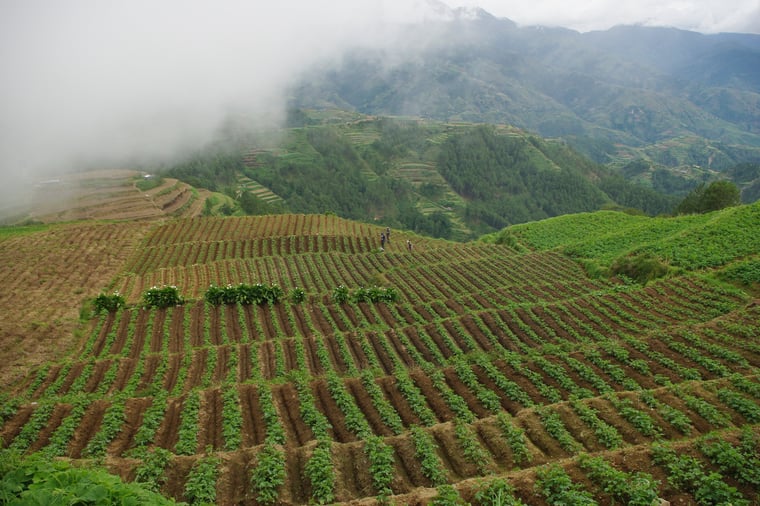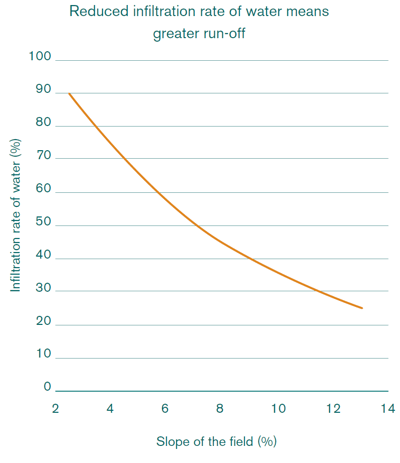
Where rainfall is intensive, leading to a risk of flooding and erosion, and when all operations from tillage through harvest are manual, using potato beds is common.
In equatorial East and Central Africa, this is a most general means of growing potato. During the tropical rainy season, showers of over 40 mm are common. This system, even when 20% of the field is flooded, reduces the risk of inundated, asphyxiated and subsequently rotting tubers. Such beds are usually oriented perpendicular to the slope, thus reducing runoff and erosion. Where there is risk of saturation of the soil that causes landslides, growers tend to deviate from this practice to permit a faster evacuation of rain water from the field. Then the beds more or less have the same orientation as the slope.
Handling slopes
The potato crop originates from the central highlands of the Andean mountain range, where originally it grew at steep slopes and at terraces. Upon domestication potato was also grown in winter in the coastal plains in Peru. Currently, the crop worldwide is found more in relatively flat lands than at steep slopes. In some regions in the Andes, terraces are abandoned because it is too laborious to maintain them. Labor is becoming scarce and mechanization on such small and narrow terraces is not feasible. Besides difficulties in mechanizing, cultivation of slopes has disadvantages regarding irrigation compared with flat lands. Currently, potato production in mountainous regions is often relatively low tech with local for local production whereas flat lands have mechanized large-scale agriculture for the national or global market.
Infiltration rate of water
The infiltration rate of water into the soil depends on several factors. Flat fields with little runoff have the highest infiltration rate. Runoff increases with slope, with a higher proportion of clay particles and with less organic matter, with more compaction of the soil and its associated increased bulk density and reduced porosity. Also if a soil cap is formed after heavy rain, water runs off more easily. Ground covered with foliage of crops or other vegetation undergoes less runoff as stems and leaves break the force of water. Besides averting the adverse effect of environmental and crop factors of runoff, growers improve the structure by ripping plough pans through subsoiling and breaking surface caps with a roll.

The steeper the slope the less water infiltrates the soil within a certain time span. Infiltration is further lessened by soil compaction and by heavier soils that contain more clay and less organic matter. Reduced slope angle, shorter furrows and measures such as making small dams and punched holes to improve the infiltration rate of water, reduce erosion and prevent runoff of nutrients and pesticides.
Want to keep reading about the potato crop and read up on important details regarding planting operations?
Our Potato handbook is a global potato university in 1 book!
Buy your copy today and get a one-year free subscription to PotatoWorld magazine.

